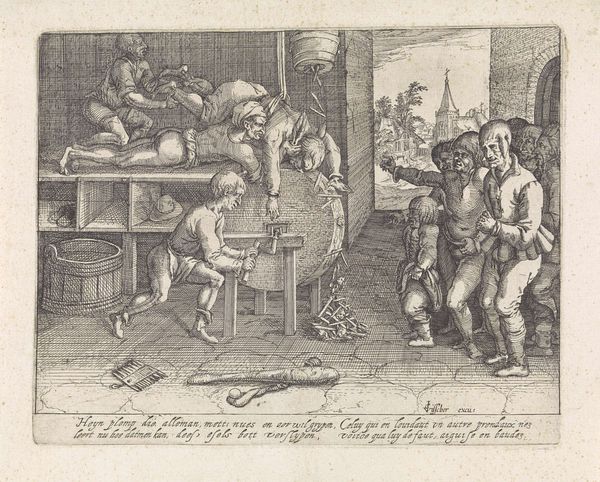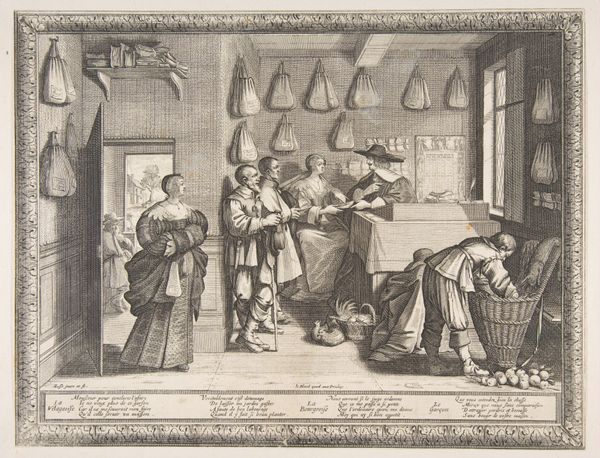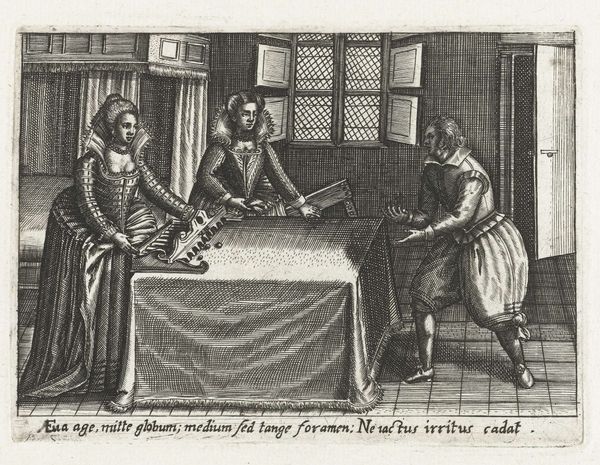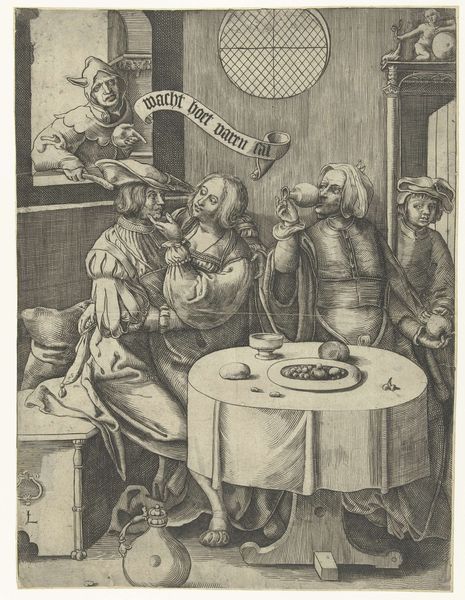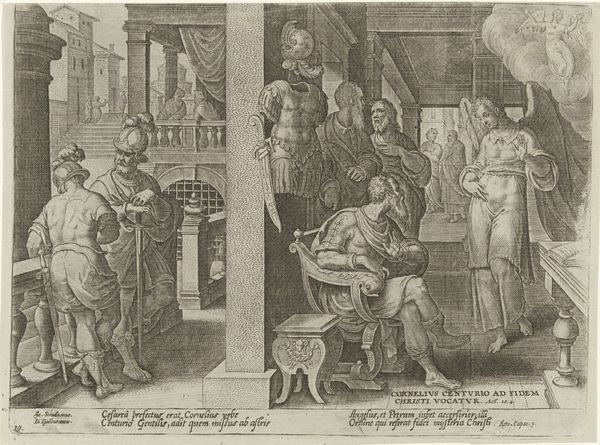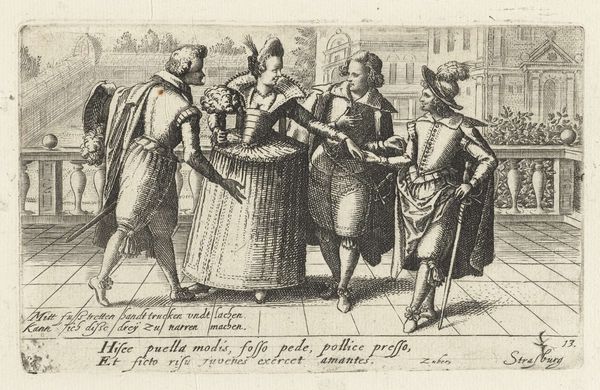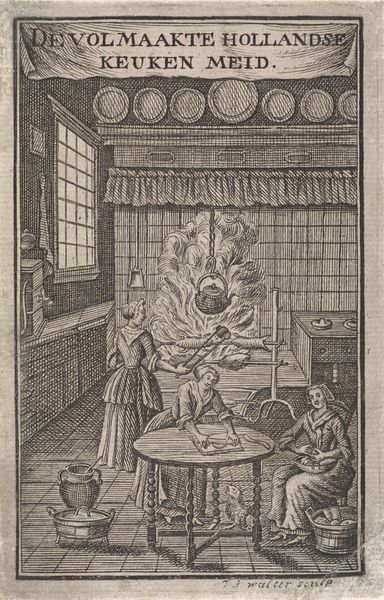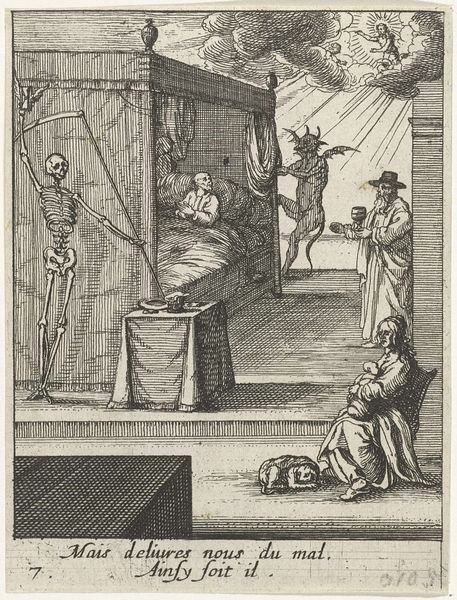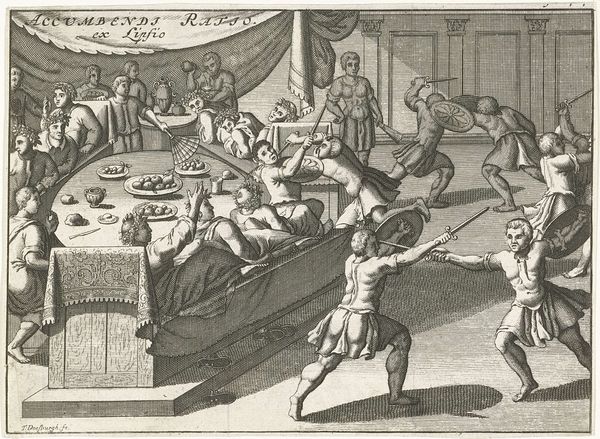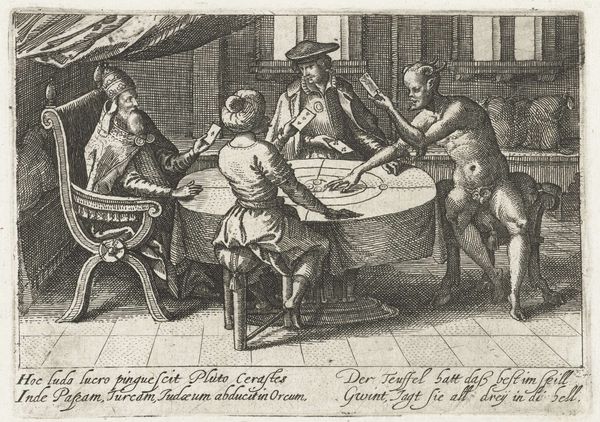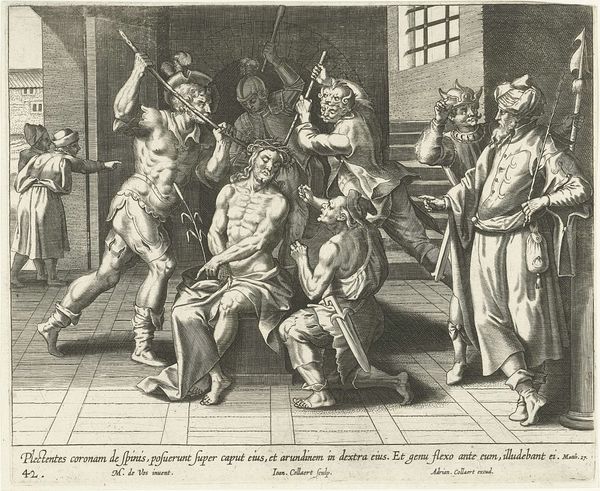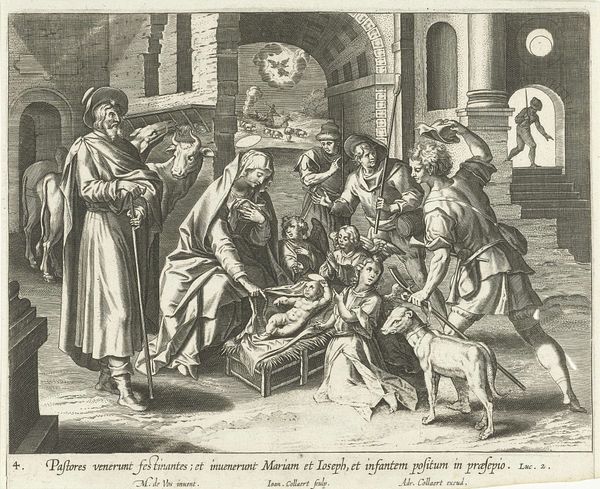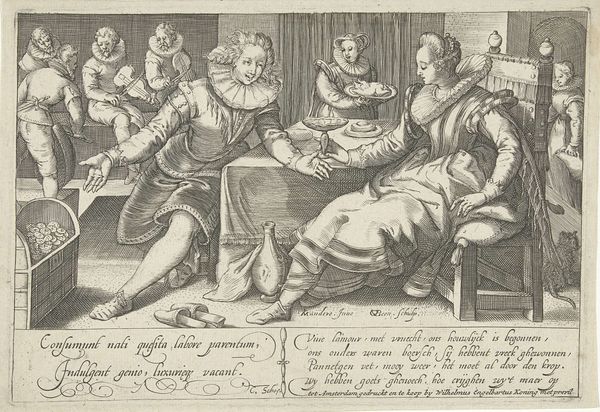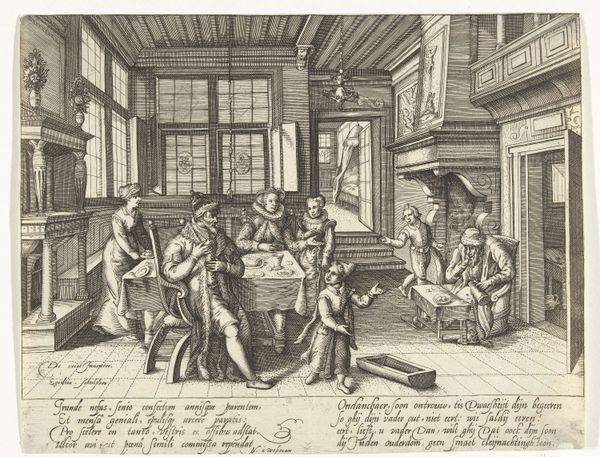
Dwaze man wordt door de barbier ontdaan van de nar die uit zijn hoofd groeit 1608
0:00
0:00
print, etching, engraving
#
baroque
# print
#
etching
#
mannerism
#
genre-painting
#
history-painting
#
engraving
Dimensions: height 93 mm, width 136 mm
Copyright: Rijks Museum: Open Domain
Curator: Jacob van der Heyden’s etching, “Dwaze man wordt door de barbier ontdaan van de nar die uit zijn hoofd groeit,” created in 1608, presents a fascinating scene. I’m immediately drawn to the composition's theatrical feel. The meticulous details, rendered in black and white, evoke a curious blend of comedy and unease. Editor: This work visualizes the relationship between knowledge, madness and social order, very important themes at the turn of the 17th century. We see the 'fool' undergoing a surgical procedure, as the barber attempts to excise a literal fool's cap growing from his head. It's a stark commentary on societal pressures to conform, and the pain inherent in such transformation. Note how other figures surround him. The action suggests a broader socio-political theater, the barber becomes the tool of the system. Curator: Yes, the dynamic poses create a strong visual tension! I want to focus on how light and shadow carve out form and how van der Heyden masterfully guides our eye through the image. Notice how the placement of the window creates light in the back and the characters in the front almost dance around that light. And I see some dolls under the table in the forefront, these figures repeat throughout the composition. Do they play any role? Editor: Precisely. The dolls underfoot, like discarded aspects of the self, highlight the fragmentation involved in suppressing individuality to accommodate societal expectations. In considering power dynamics at play, we cannot ignore that the action takes place at the expense of a single man at the mercy of social norms and a very busy barber. In this manner, it anticipates the work of Foucault and poststructuralists who interrogated the relationships of power in our everyday lives. Curator: Indeed, I see this etching as van der Heyden employing skillful, Baroque lines to question these very mechanisms of societal control. Editor: I agree. Considering these different angles allows for an expanded experience of the artwork’s original setting.
Comments
No comments
Be the first to comment and join the conversation on the ultimate creative platform.
